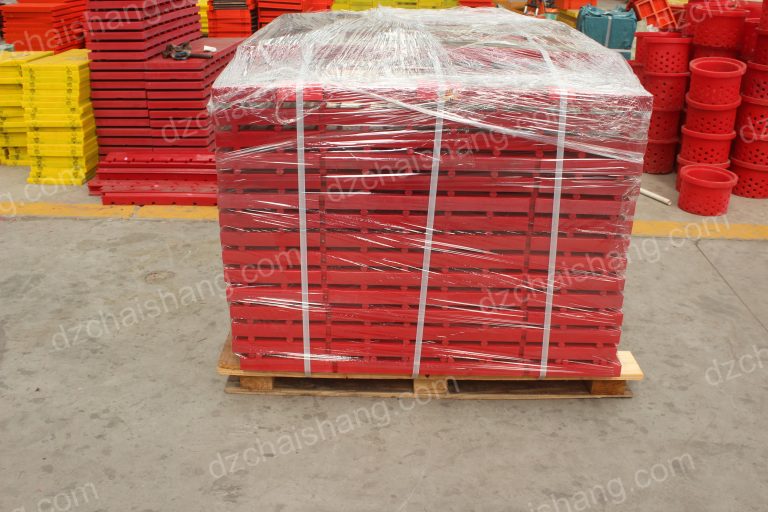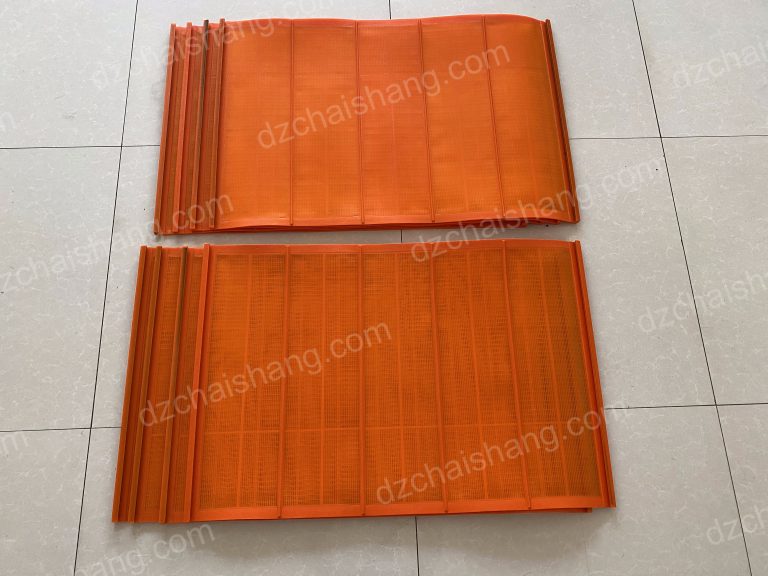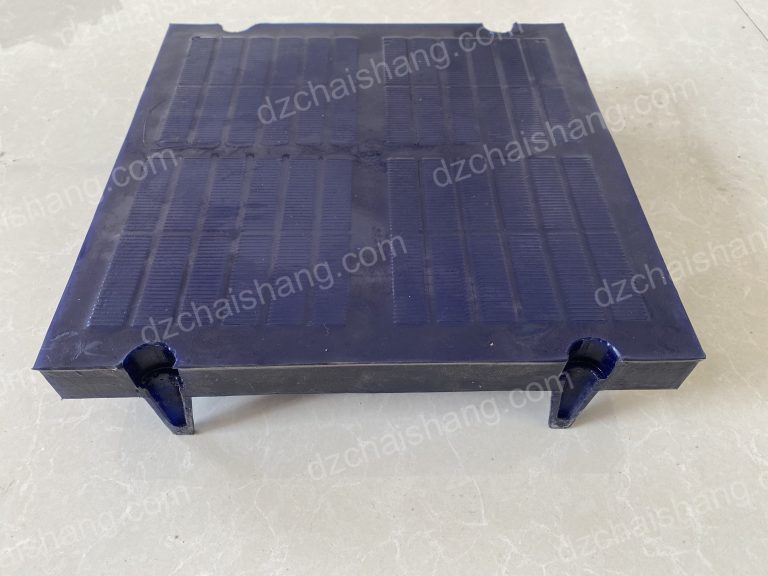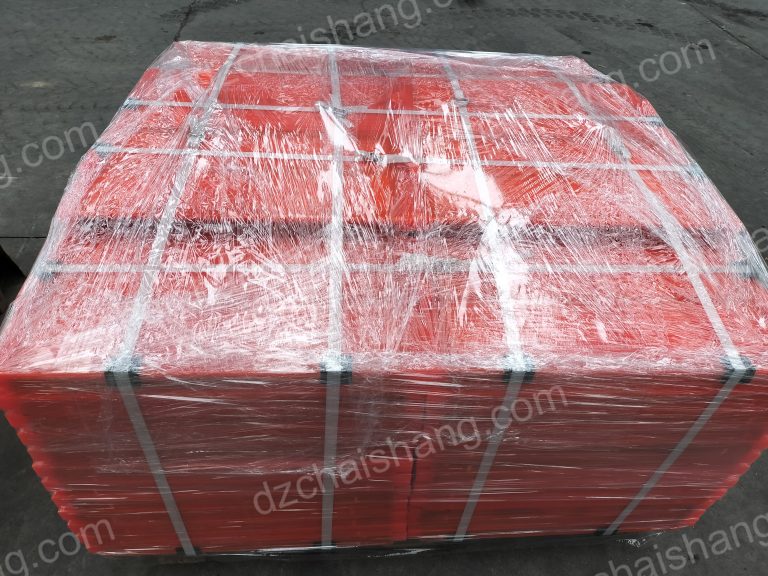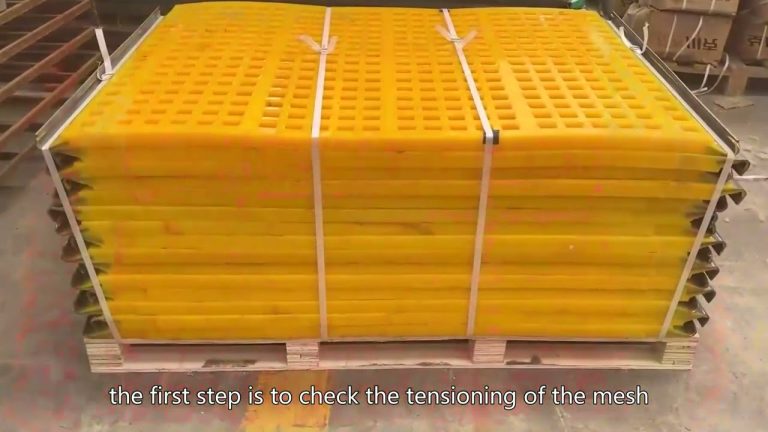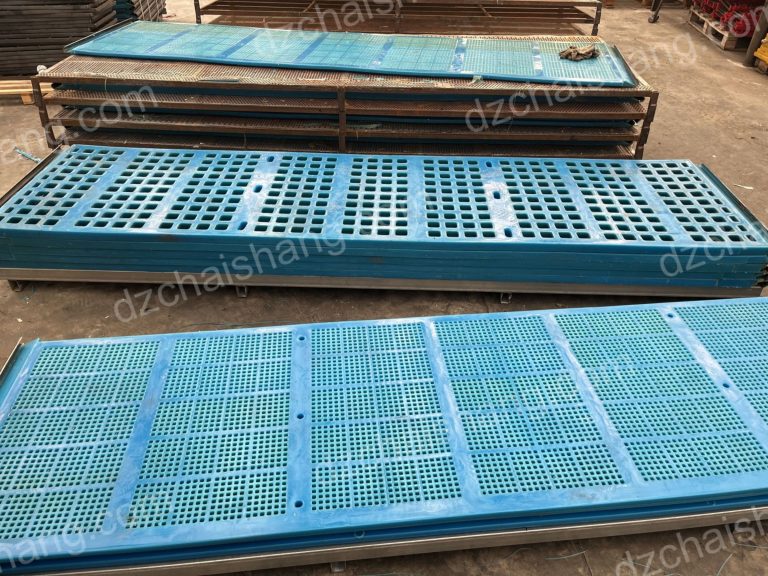Advantages of polyurethane vibrating screen mesh in Mineral Processing
Polyurethane VIBRATING screen mesh: Advantages in Mineral Processing In the realm of mineral processing, efficiency and durability are paramount. The polyurethane vibrating screen mesh stands out as a stellar example of innovation in this field, offering a multitude of advantages over traditional screening materials like wire mesh or rubber. This advanced material has revolutionized the way minerals are sorted and processed, providing both economic and operational benefits. One of the primary advantages of polyurethane screen mesh is its exceptional durability. Unlike wire mesh, which can suffer from corrosion, or rubber, which may degrade with time, polyurethane is highly resistant to wear and tear. This resilience is particularly beneficial in the abrasive environment of mineral processing, where materials are constantly moving and rubbing against the screen. The longevity of polyurethane screens means less frequent replacement, which translates to reduced downtime and maintenance costs. Moreover, polyurethane is known for its flexibility, which allows it to absorb energy and reduce the impact from the material being screened. This flexibility not only contributes to the durability of the screen but also enhances its screening efficiency. The ability of the polyurethane to flex and return to its original shape helps to prevent blinding and pegging, common issues where particles get stuck in the screen openings. As a result, the screening process becomes more efficient, leading to a higher quality product. Another significant advantage is the improved flow of materials facilitated by polyurethane screens. The smooth surface of the polyurethane reduces friction and allows materials to slide over it more easily compared to wire mesh. This improved flow not only increases the throughput but also contributes to better separation and classification of the minerals being processed. The precise apertures engineered into polyurethane screens ensure consistent particle size distribution, which is crucial for the subsequent stages of mineral processing. Polyurethane vibrating screen mesh also offers superior noise reduction properties. The operation of screening equipment can be notoriously loud, which poses challenges in terms of workplace noise levels and potential hearing damage. Polyurethane’s sound-absorbing qualities help to dampen the noise produced during screening, creating a more pleasant and safer working environment. Furthermore, the versatility of polyurethane allows for customization to meet specific processing requirements. Polyurethane screen plates can be designed with various opening sizes, shapes, and patterns to optimize the screening process for different materials. This level of customization ensures that the screening equipment can be tailored to maximize efficiency for any given mineral processing application. Environmental considerations also favor the use of polyurethane screens. The material is less likely to contaminate the minerals being processed, as it does not rust or degrade into smaller particles that could mix with the product. Additionally, the extended service life of polyurethane screens means less waste and fewer resources are used over time, contributing to more sustainable operations.Maintenance Tips for Polyurethane Screen Plates in Screening Applications
Polyurethane vibrating screen mesh and polyurethane screen plates have become indispensable in the mining and quarrying industries, thanks to their durability and efficiency in screening applications. These innovative screening solutions offer superior performance over traditional wire mesh screens, including increased wear life, reduced noise levels, and improved screening accuracy. However, to fully benefit from these advantages, it is crucial to maintain polyurethane screen plates properly. This article provides essential maintenance tips to ensure the longevity and effectiveness of these screening components. Firstly, it is important to regularly inspect polyurethane screen plates for signs of wear and tear. This involves checking for any visible damage, such as tears, holes, or excessive wear on the surface of the screen. Early detection of damage can prevent minor issues from escalating into major problems that could compromise the screening process’s efficiency and require costly replacements. During inspection, also pay attention to the screen’s attachment points, ensuring they are secure and free from damage, as loose or damaged attachments can lead to uneven wear and tear. Cleaning the polyurethane screen plates is another critical maintenance step. Over time, screens can become clogged with materials, reducing their screening efficiency. Regular cleaning helps to remove any build-up of materials and ensures the screen’s openings are clear, allowing for optimal screening performance. It is advisable to use gentle cleaning methods, such as washing with water or using soft brushes, to avoid damaging the polyurethane material. Proper storage of polyurethane screen plates is also essential, especially for those not in continuous use. Screens should be stored in a way that prevents them from becoming deformed or damaged. Ideally, they should be laid flat in a dry, cool area away from direct sunlight and extreme temperatures, which can cause the polyurethane material to degrade over time. Additionally, avoid stacking heavy objects on top of the screens, as this can lead to deformation and affect their performance when next used. Another key aspect of maintaining polyurethane screen plates is ensuring the screening equipment is operating correctly. Misalignment or imbalance in the vibrating screen can lead to uneven wear on the screen plates, reducing their lifespan. Regularly check and adjust the equipment according to the manufacturer’s specifications to ensure it is functioning optimally. This not only helps to prolong the life of the screen plates but also enhances the overall efficiency of the screening process. Lastly, it is crucial to follow the manufacturer’s recommendations for maintenance and replacement of polyurethane screen plates. Manufacturers often provide specific guidelines based on the material composition and design of the screen plates, which can vary significantly between products. Adhering to these recommendations can help maximize the lifespan of the screens and ensure they perform effectively in their specific screening applications. In conclusion, polyurethane vibrating screen mesh and polyurethane screen plates offer significant benefits in screening applications, but their performance and longevity heavily depend on proper maintenance. Regular inspection, cleaning, correct storage, ensuring equipment is operating correctly, and following manufacturer recommendations are essential steps in maintaining these innovative screening solutions. By adhering to these maintenance tips, users can enjoy the full range of benefits that polyurethane screen plates have to offer, including improved screening efficiency, reduced maintenance costs, and extended equipment life.Comparing Polyurethane Screen Mesh and Plates with Traditional Screening Materials
Title: Polyurethane Vibrating Screen Mesh and polyurethane screen plate In the realm of industrial screening, the materials used for vibrating screen meshes and plates are pivotal to the efficiency, durability, and overall cost of the screening operations. Traditional materials such as wire mesh made from steel or other metals have long been the standard in the industry. However, with advancements in polymer technology, polyurethane has emerged as a superior alternative, offering a range of benefits that traditional materials struggle to match. Polyurethane screen meshes and plates are renowned for their exceptional abrasion resistance. Unlike metal screens that can wear down quickly when subjected to continuous abrasion, polyurethane withstands the harsh conditions, ensuring a longer lifespan. This durability translates to fewer replacements and less downtime for maintenance, which is critical for operations that require constant screening, such as in mining or aggregate processing. Moreover, the resilience of polyurethane to various environmental factors is a significant advantage. Metal screens are prone to corrosion, especially when exposed to moisture or acidic materials. Polyurethane, on the other hand, is non-corrosive and maintains its integrity even in the presence of water or chemicals. This property not only extends the life of the screen but also reduces the risk of contamination in processes where purity is essential.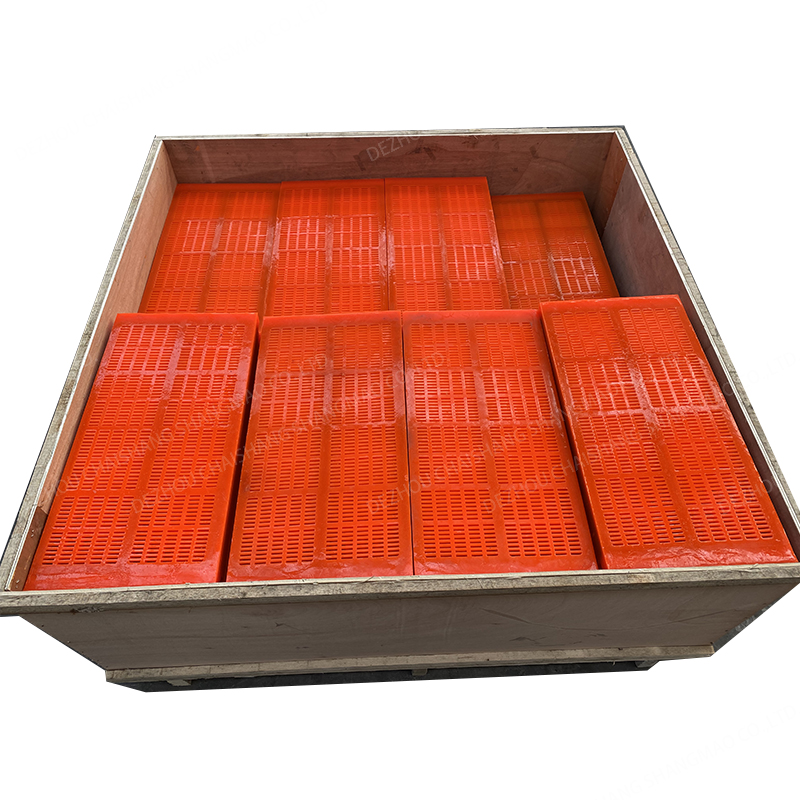
Another notable benefit of polyurethane screens is their noise reduction capability. The screening process can be incredibly loud, especially with metal meshes, which can create a significant noise pollution issue. Polyurethane’s inherent sound-dampening qualities lead to a quieter operation, improving the working conditions for personnel and complying with noise regulations more effectively. Furthermore, polyurethane screens offer superior flexibility, which enhances their screening performance. The elastic nature of the material allows it to flex rather than bend or break, providing a self-cleaning effect that prevents blinding and clogging. This elasticity ensures that the screens can handle materials that would damage or impair metal screens, maintaining high throughput and efficiency. The design versatility of polyurethane also stands out. It can be molded into various shapes and sizes, allowing for custom solutions tailored to specific screening needs. This adaptability is particularly beneficial for complex or unique applications where standard screens may not be adequate. Despite these advantages, it is important to acknowledge that polyurethane screens may come with a higher initial cost compared to traditional metal screens. However, when considering the total cost of ownership, including maintenance, replacement, and operational efficiency, polyurethane often proves to be more cost-effective in the long run. In terms of performance, polyurethane screens exhibit excellent vibration absorption, which enhances their screening accuracy. The material’s ability to absorb energy allows it to transmit less vibration to the supporting structure, reducing wear and tear on the screening equipment. This characteristic not only improves the quality of the screening process but also contributes to the longevity of the entire screening system. In conclusion, when comparing polyurethane screen meshes and plates with traditional screening materials, it is clear that polyurethane offers a multitude of benefits. Its durability, resistance to environmental factors, noise reduction, flexibility, design versatility, and performance attributes make it a superior choice for a wide range of industrial screening applications. As industries continue to seek more efficient and cost-effective solutions, the adoption of polyurethane screening materials is likely to become increasingly prevalent, setting a new standard for the future of screening technology.

